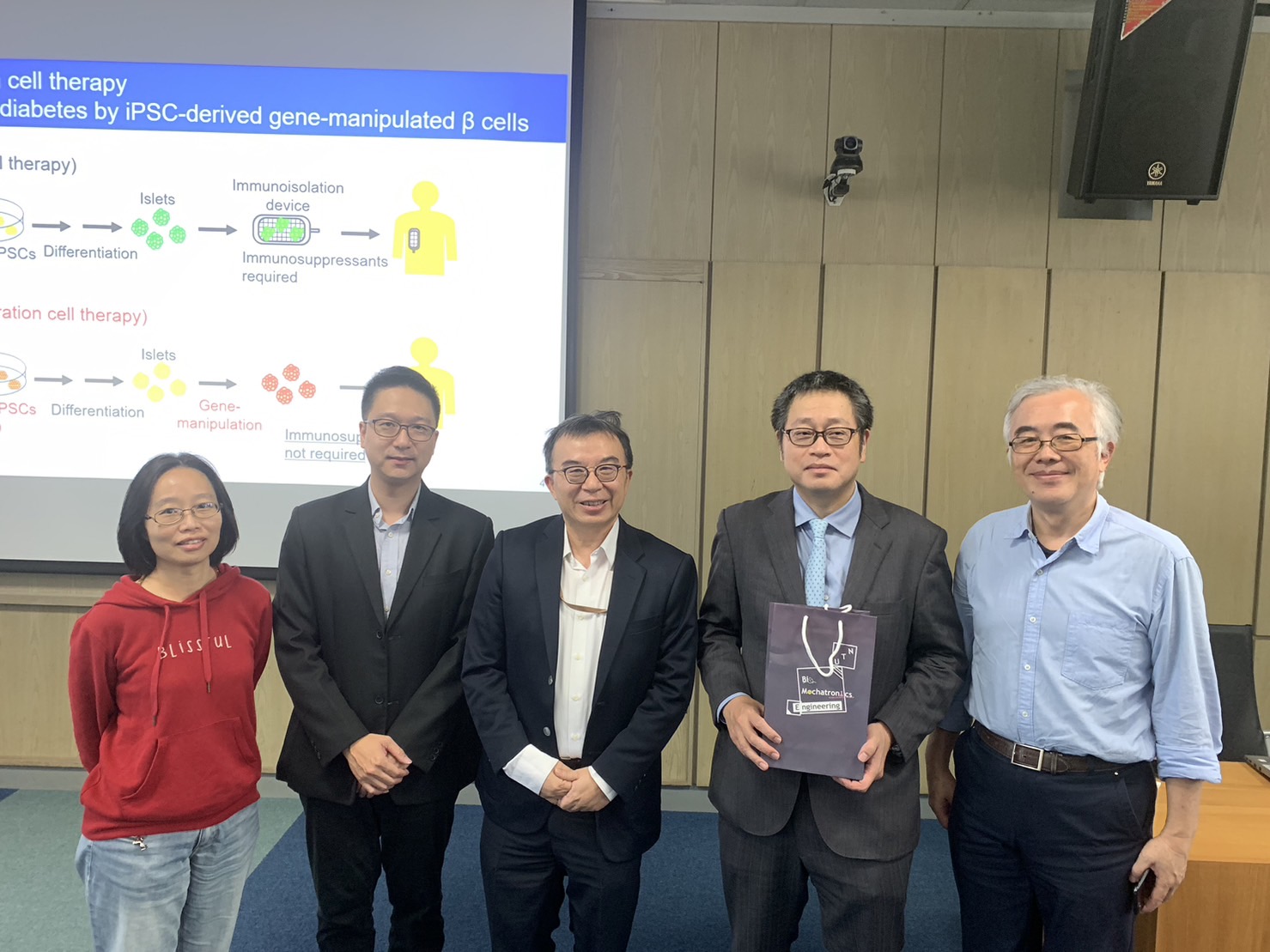
人類誘導多能幹細胞(hiPSC)由山中教授開發,是一種由體細胞重新編程的幹細胞。 它可以在培養皿中永遠擴增並分化成任何細胞類型。 由於這些特性,hiPSC 被廣泛用於藥物發現、疾病機制和再生療法。 目前在日本,細胞療法的臨床試驗已應用於帕金森氏症、關節病、角膜病等疾病。在所有器官中,長船教授特別關注hiPSC在肝臟、胰臟、和腎臟。 這些器官中常見的一些疾病分別是肝硬化、I型糖尿病和慢性腎臟病。 當嚴重時,這些疾病可能需要器官移植。 然而,器官捐贈者的數量跟不上需要的患者數量的增加,也可能出現移植失敗等問題。 因此,他們正在使用 hiPSC 來開發細胞療法、器官重建、疾病模型和藥物發現機制,作為器官移植的替代方案。希望這些方法能夠減緩疾病進展,直到患者接受移植,甚至可能在未來演變成器官移植的更安全的替代療法。
撰寫者: 碩士班學生吳亭怡
Human induced pluripotent stem cells (hiPSCs), developed by Professor Yamanaka, is a type of stem cell reprogrammed from somatic cells. It can expand forever on a culture dish as well as differentiate into any cell types. Due to these properties, hiPSC are widely used for drug discoveries, disease mechanisms, and regenerative therapies. Currently in Japan, clinical trials with cell therapy have already been applied onto diseases such as: Parkinson disease, joint disease, corneal disease, etc. Of all the organs, Professor Osafune is specifically focusing on the application of hiPSCs on the liver, pancreas, and kidney. Some common diseases found in these organs are liver cirrhosis, type I diabetes, and chronic kidney disease, respectively. When severe, these diseases may require organ transplants. However, the number of organ donors fails to keep pace with the increasing number of patients in need, and problems such as graft failure may also occur. Thus, they are using hiPSCs to develop cellular therapy, organ reconstruction, disease models, and drug discovery mechanisms as an alternative to organ transplants. Hopefully, these methods can potentially slow down disease progression until patients receive their transplant, or perhaps even evolving into a safer alternative treatment to organ transplants in the future.
Author: Master student: Ting-Yi Wu